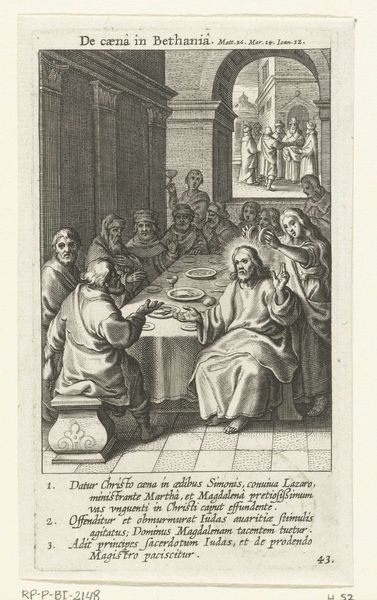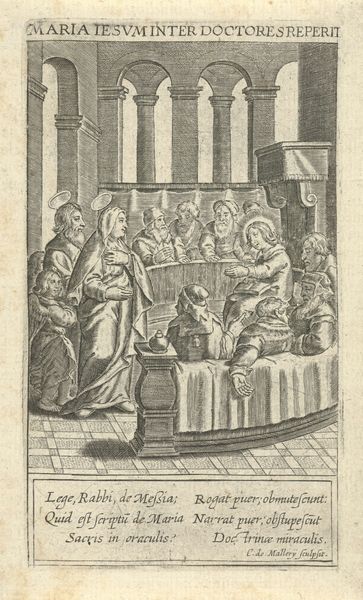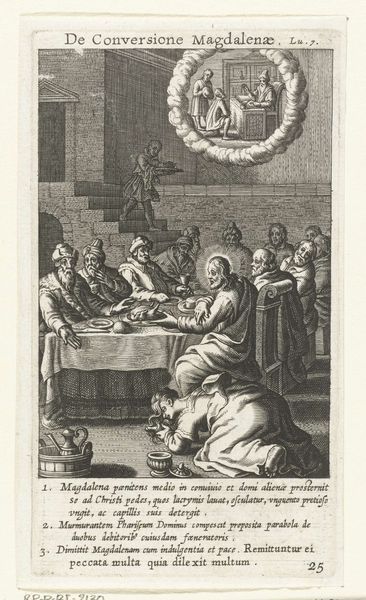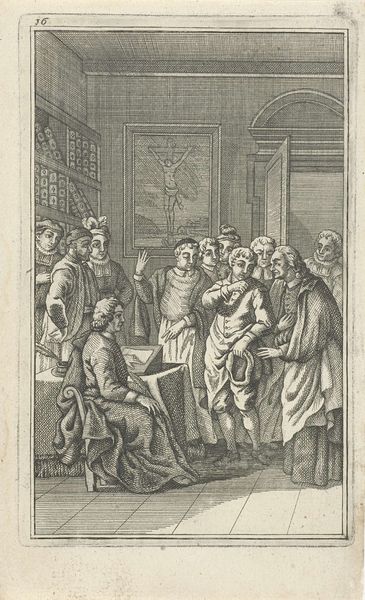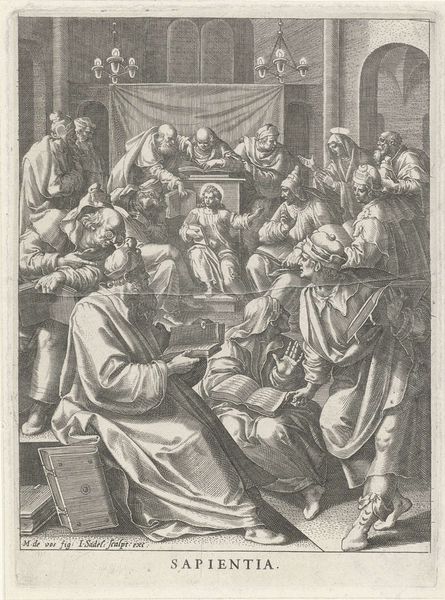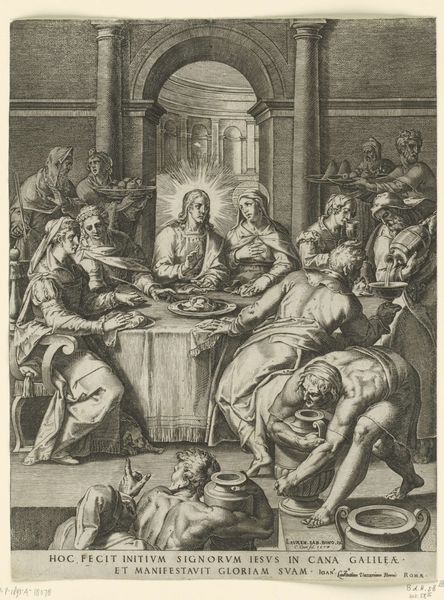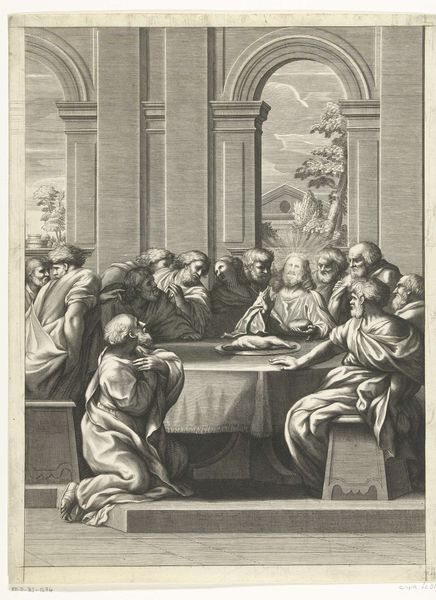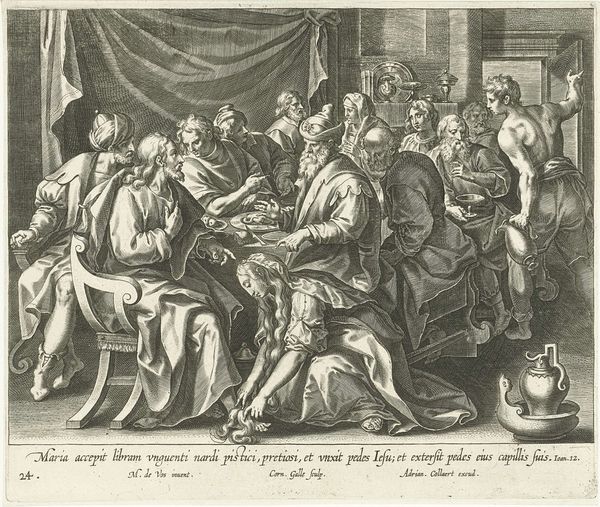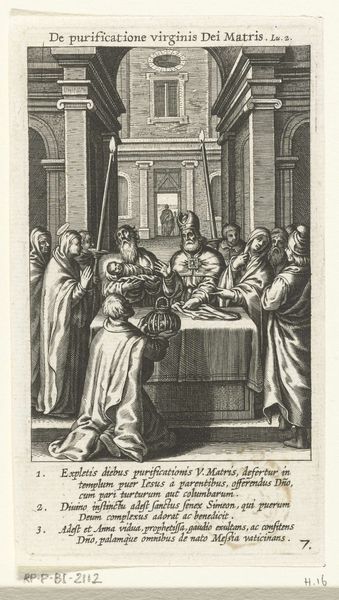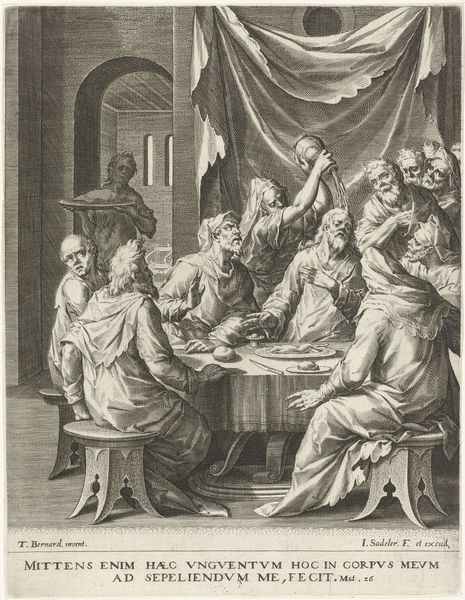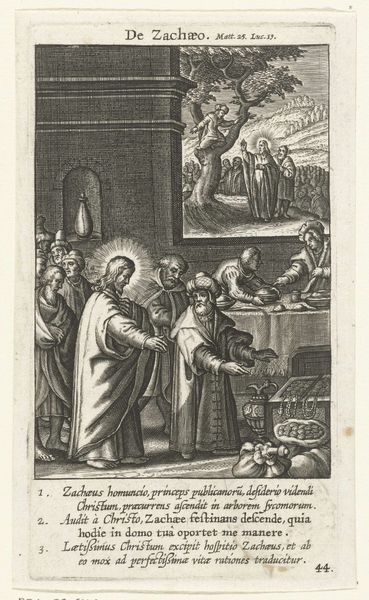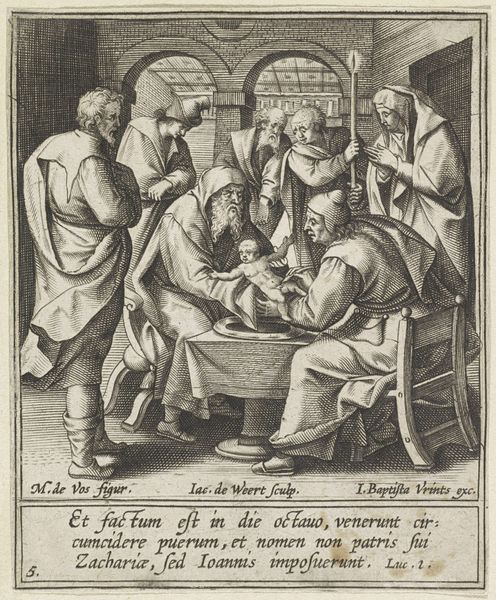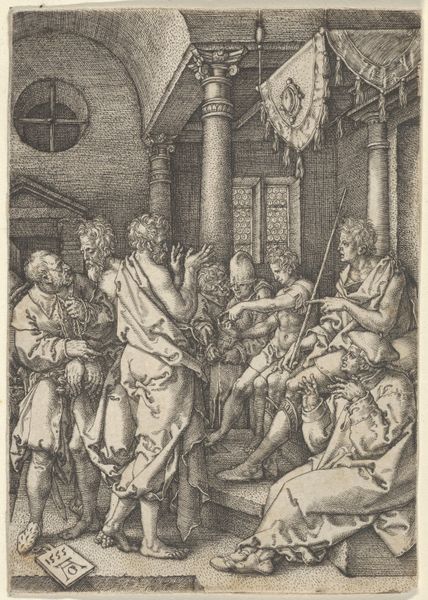
print, engraving
#
narrative-art
#
baroque
# print
#
old engraving style
#
figuration
#
history-painting
#
engraving
Dimensions: height 135 mm, width 95 mm
Copyright: Rijks Museum: Open Domain
This print, "Voetwassing," was made by Cornelis Galle I in the late 16th or early 17th century, using the technique of engraving. Engraving is an intaglio process, meaning that the image is incised into a metal plate, here likely copper, using a tool called a burin. The incised lines hold ink, and when pressed onto paper, they create the printed image. Galle's skill is evident in the detailed linework, creating textures and tones that bring the scene to life. The precision of the engraving allowed for the reproduction of images, making them accessible to a wider audience. Consider how the act of engraving itself mirrors the act of service depicted. Just as Christ humbly washes the feet of his disciples, the engraver painstakingly etches each line, dedicating hours of labor. This process is physically demanding and requires immense patience. By focusing on the material and the making, we can see how this print transcends its religious subject matter, speaking to broader social and economic contexts of labor, skill, and the dissemination of ideas in early modern Europe.
Comments
No comments
Be the first to comment and join the conversation on the ultimate creative platform.
